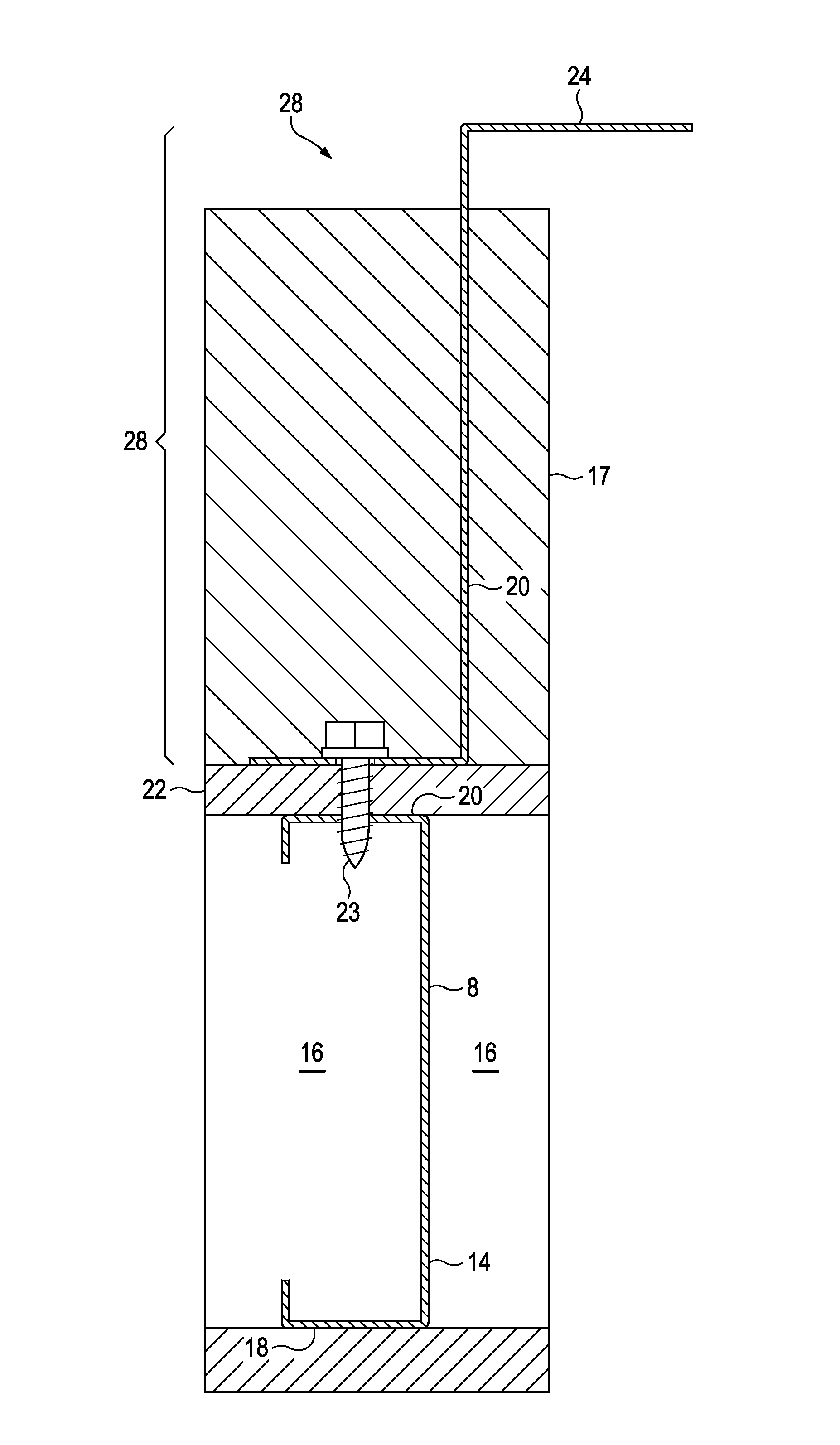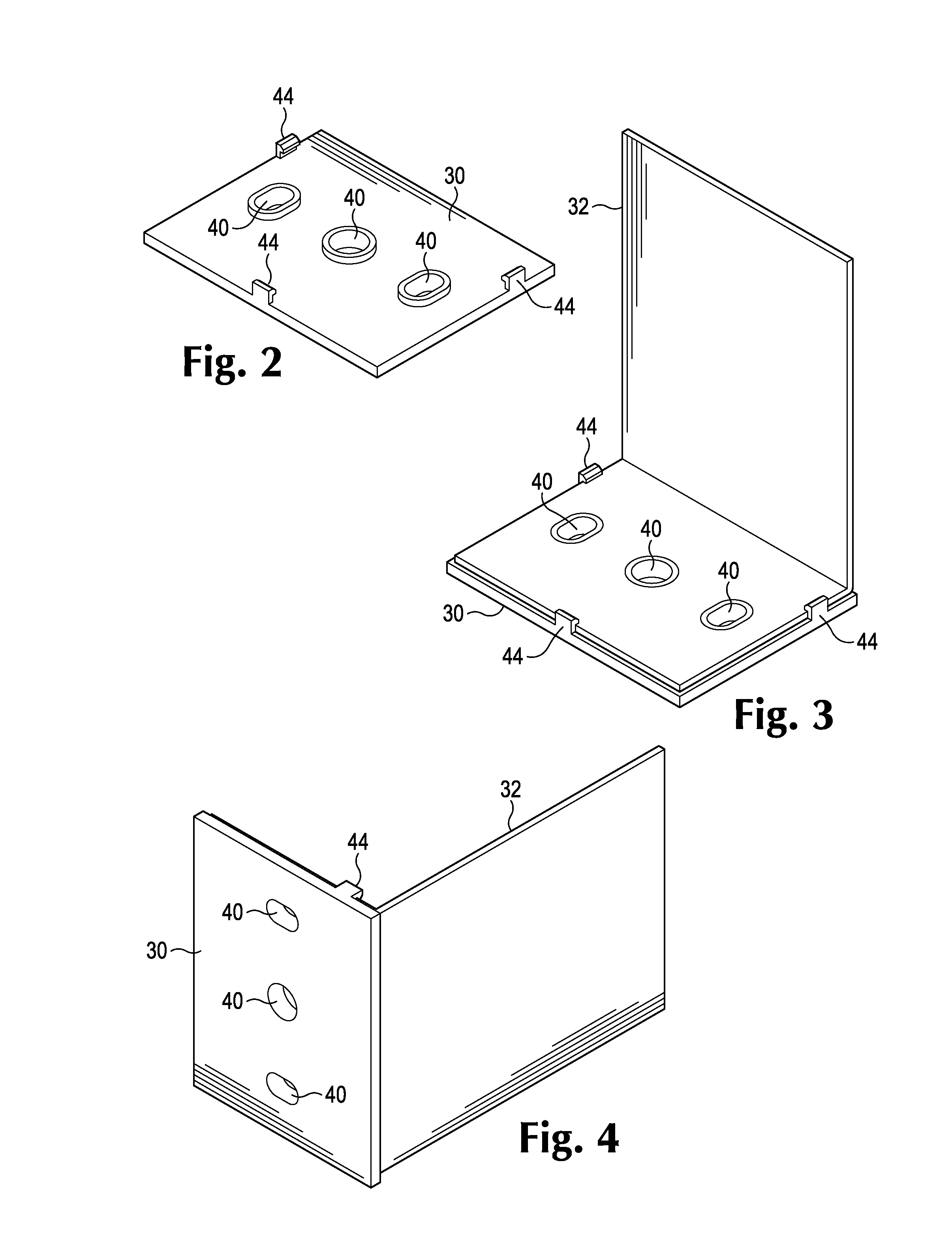System and methods for thermal isolation of components used
a technology of thermal isolation and components, applied in the direction of heat dissipation, fire prevention, washing machines, etc., can solve the problems of large moment of force and shear force, damage and failure of building components, loss of insulating properties, etc., and achieve the effect of preventing the conduction of thermal energy
- Summary
- Abstract
- Description
- Claims
- Application Information
AI Technical Summary
Benefits of technology
Problems solved by technology
Method used
Image
Examples
Embodiment Construction
[0041]As shown in FIG. 1, a wall structure is commonly formed of vertical wall studs 8 that are spaced apart from each other and attached to a wall plate (not shown) at one end and a ceiling plate (not shown) at the other end. The studs form cavities 16 between them, and are commonly formed from steel. They are rigidly interconnected to both the wall plate and the ceiling plate, forming a support structure 14. The support structure 14 has an opposing inside facing aspect 18 and an outside facing aspect 20, corresponding to the building interior facing aspect of the wall and the building exterior facing aspect of the wall. Adjoining walls form corners with various angles, and window openings and door openings are commonly defined.
[0042]The elements of the building envelope are attached to the support structure 14. Conventionally, sheathing 22 such as plywood, oriented strand board, or exterior grade gypsum board may be attached to the outside facing aspect 20 of the support structure...
PUM
| Property | Measurement | Unit |
|---|---|---|
| Surface area | aaaaa | aaaaa |
| Energy | aaaaa | aaaaa |
| aaaaa | aaaaa |
Abstract
Description
Claims
Application Information
 Login to View More
Login to View More - R&D
- Intellectual Property
- Life Sciences
- Materials
- Tech Scout
- Unparalleled Data Quality
- Higher Quality Content
- 60% Fewer Hallucinations
Browse by: Latest US Patents, China's latest patents, Technical Efficacy Thesaurus, Application Domain, Technology Topic, Popular Technical Reports.
© 2025 PatSnap. All rights reserved.Legal|Privacy policy|Modern Slavery Act Transparency Statement|Sitemap|About US| Contact US: help@patsnap.com



